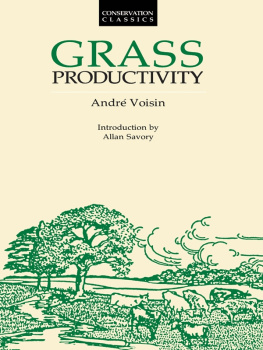
About the Author

Bhupendra Singh is presently raising turfgrasses at Delhi Golf Club, New Delhi, India as Dy. Manager, Golf Course. He had his rst affair with Agriculture in the year 2003 when he enrolled in College of Agriculture, G.B.Pant University of Agriculture & Technology, Pantnagar, Uttarakhand. In the year 2007 he graduated and was introduced to the fascinating world of Golf & Grasses at DLF Golf & Country Club, Gurugram, where he began growing turfgrass. Soon he decided to grow it well and took it as a profession! His passion for profession led him to Raffles Golf & Country Club, Singapore and then to London where he learned how grass grows in foreign land. During his decade long career he was primarily involved in turfgrass management, golf course construction projects & golf event management.
His turfgrass understanding was enriched with an on ground turfgrass maintenance experience, experimentation and extensive reading. He also had an opportunity of learning turfgrass management from veterans of turfgrass trade from India & abroad. As his understanding with turfgrasses got refined it translated into several articles pertaining to golf & turfgrass management that he had published in the past decade.
He had been keen in sharing his perspective about turfgrass Management through all available means including presentations in Turf seminars to delivering guest lectures about turfgrass management to turf science students including PG students of Indian Agriculture Research Institute, Pusa, New Delhi. He is a life member of Golf Course Superintentdents & Managers Association of India (GCS&MAI). Apart from turfgrass management he ventured in to learning the Rules of Golf and is an IGU-R&A certied A-class golf rules referee.
He lives in Faridabad, Haryana with his wife Abhilasha, ve years daughter Bhumi & a year old son Aaditya.
He may be reached at:
Foreword
On my first visit to India in 2010, I met Bhupendra Singh. Weve met many times since then, at various places, but one of my clearest memories remains that first meeting on a December morning at Delhi Golf Club. The grass was almost dormant, and there was a mist in the air, yet the course was packed with members and their guests who were enjoying the cool temperatures and the fine grass conditions. We made our way around the course, carefully moving from place to place while avoiding the flying golf balls. Bhupendra showed me the areas where the turf got the most traffic and suffered for it, we looked at various types of grasses on the course, talked about turfgrass diseases that occur in winter, and of course I marveled at the many tombs and monuments on the property. I had never seen anything like it. Now that I think about it, I still havent!
I was in India to study the grasses on golf courses in the country, and to familiarize myself with the way courses were maintained. This was in advance of an educational programme I was to conduct for the Indian Golf Union (IGU) from 2011 until 2015. The IGU had provided me with a car and driver, and on this day, it was to be Bhupendra who would accompany me to other courses in the afternoon. This guy really seems to know what he is doing, I remember thinking that morning, and I was looking forward to spending the afternoon learning about turfgrass with him.
That afternoon he brought me to the Jaypee Greens course, where we saw different varieties of bermudagrass and lots of maintenance equipment, and then to the Noida Golf Course, where we saw even more. Bhupendra taught me about the Calcutta doob variety and explained how it was different from the Selection 1 variety. He told me how these grasses performed in different types of weather, and how they were managed in India. He asked me lots of questions too, about grass varieties, maintenance equipment, and the production of the best turfgrass surfaces. As were we riding back to Delhi in what was now late afternoon sunshine, I thought myself lucky to have someone showing me around who has a passion for grass just like I do.
Another thing I remember from my first visit to India that December was a long drive up a winding mountain road to Kodaikanal with Joseph Chakola from Coimbatore. It was cloudy and raining, and the waterfalls we passed on the way up the mountain were in full flow. Upon arriving in Kodaikanal, where the town was shrouded in a thick fog, I went straight to the golf club, where the club secretary (Mr. G.S. Mani) arranged for a roaring fire and we sat around the fireplace talking about that extraordinary club. We couldnt see anything of the course through the fog that afternoon, so we remained in that fine old clubhouse near the fire. He brought out a book about turfgrass management in England from the clubs library, and mentioned that as applicable, the club was following some of the turf maintenance techniques given in that book. That is fine, of course, if such a book is all that is available, but the management of turf in Yorkshire is a lot different than it is in Tamil Nadu, or as it must be in Delhi or anywhere else in India.
This difference is especially notable when it comes to grasses. Because turfgrass surfaces and their management are so much affected by the climate, local expertise is important. Im glad Bhupendra has written this book to share his knowledge about turfgrass in India with all of us. Having this local expertise and knowledge is essential if the lawns and sporting fields of India are to be managed sustainably a word I was glad to see him emphasize in the book in reference to turfgrass management. He has studied a lot, and learned a lot, since we first met, and I enjoyed while reading this book to see how it is informed by his experiences of planting grasses, managing playing surfaces, and solving turf problems in India.
Micah Woods
Bangkok, Thailand
Chief Scientist
Asian Turfgrass Center
www.asianturfgrass.com

Notion Press
Old No. , New No.
McNichols Road, Chetpet
Chennai -
First Published by Notion Press 2017
Copyright Bhupendra Singh 2017
All Rights Reserved.
ISBN 978-1-947429-12-3
This book has been published with all reasonable efforts taken to make the material error-free after the consent of the author. No part of this book shall be used, reproduced in any manner whatsoever without written permission from the author, except in the case of brief quotations embodied in critical articles and reviews.
The Author of this book is solely responsible and liable for its content including but not limited to the views, representations, descriptions, statements, information, opinions and references [Content]. The Content of this book shall not constitute or be construed or deemed to reflect the opinion or expression of the Publisher or Editor. Neither the Publisher nor Editor endorse or approve the Content of this book or guarantee the reliability, accuracy or completeness of the Content published herein and do not make any representations or warranties of any kind, express or implied, including but not limited to the implied warranties of merchantability, fitness for a particular purpose. The Publisher and Editor shall not be liable whatsoever for any errors, omissions, whether such errors or omissions result from negligence, accident, or any other cause or claims for loss or damages of any kind, including without limitation, indirect or consequential loss or damage arising out of use, inability to use, or about the reliability, accuracy or sufficiency of the information contained in this book.
Next page












